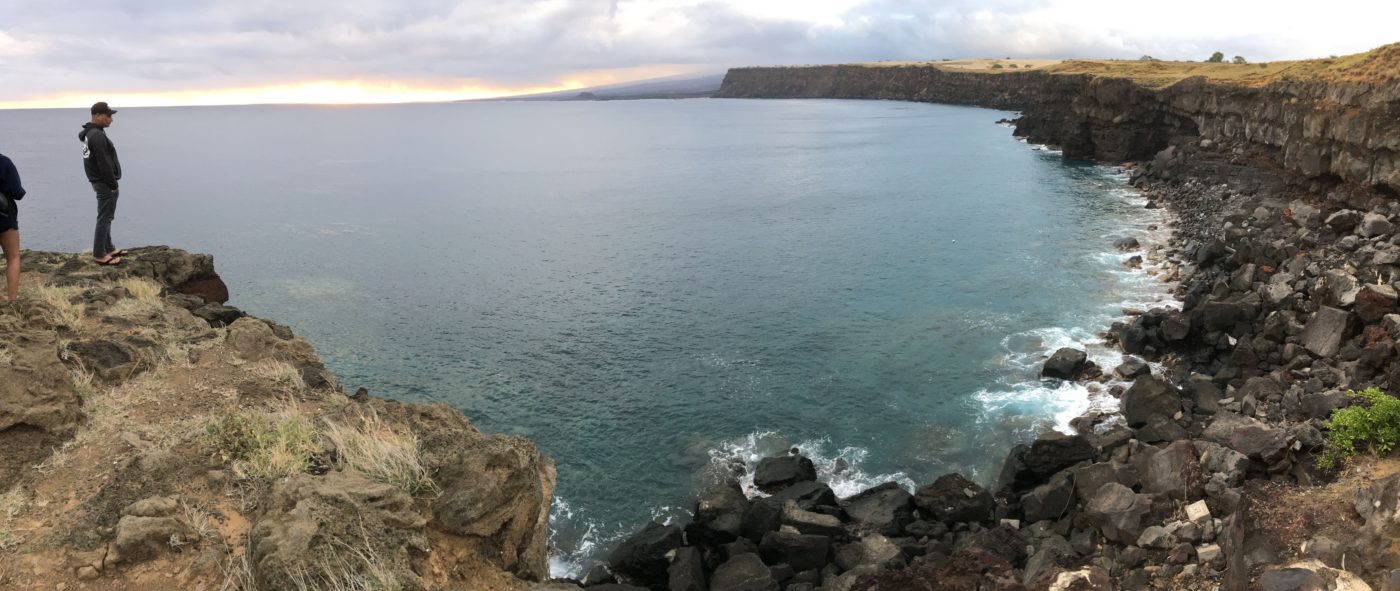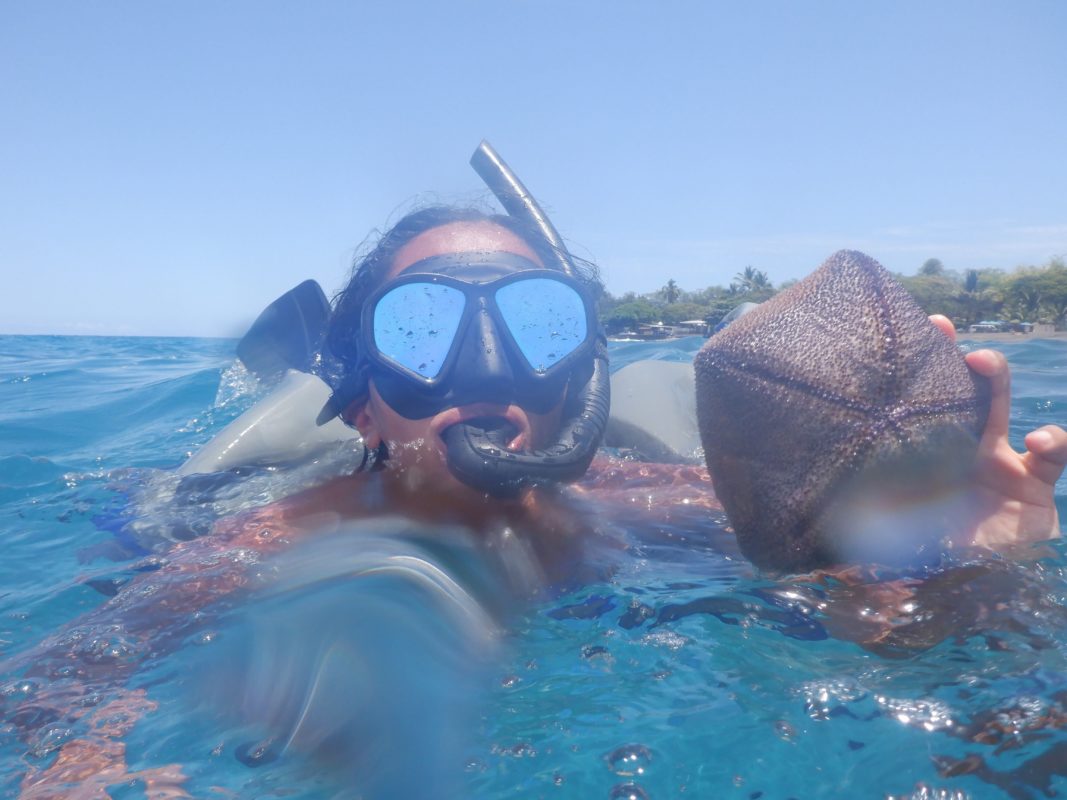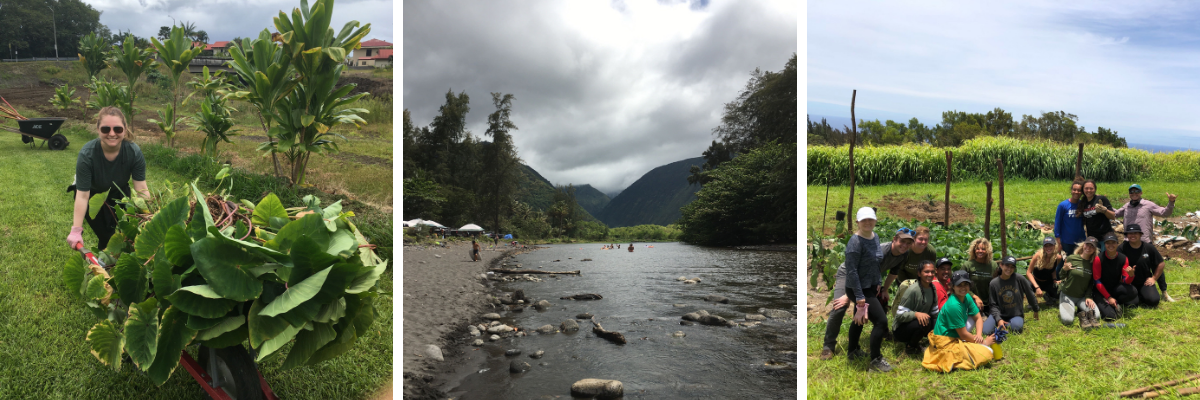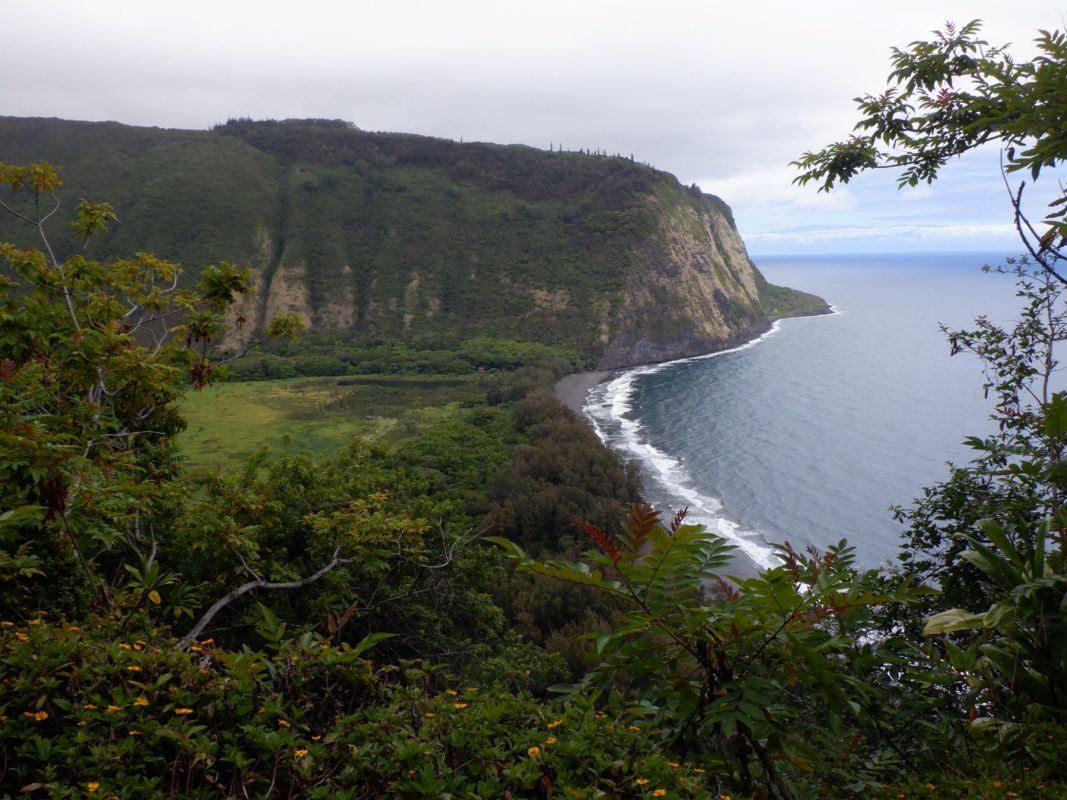It is travel season and we are ready to get out of the house. Imagine warm beaches, snowy mountains, tropical waterfalls, deserts, and vast volcanoes. Combine all those images, and add a rich culture and delicious food. Now you have the perfect vacation destination all in one place, right on the island of Hawai’i.
Activities and Food

Although it’s called The Big Island, it is not too terribly large at all. Traveling the entire island is the best way to get the most out of your time in Hawai’i. When I traveled with Give Volunteers, we started at the top of the island and hiked throughout the elevated tropics and into the valley of the black sand beaches of Waipi’o. There is so much to learn within this area.
Connecting with local guides to learn more about the island and Hawaiian culture is a very rewarding experience. Our guides provided us with genuine poke, an authentic imu ceremony where we buried our food with volcanic rock to cook for 8 hours, and taught us how to make authentic leis. Beautiful white sand beaches can be found on the eastern and western shores of the island and are the perfect place for snorkeling.

While snorkeling at Waikōloa and Ho’okena, we swam with various creatures, including tropical fish, coral, urchins, dolphins, sea turtles, and even sharks. On the northern and southern shores, the local coffee shops offer some of the best coffee in the world due to the rich volcanic soil. While we were at the southernmost point of the United States, we were able to stargaze on the cliff of the beautiful coast overlooking the Pacific Ocean.
The coast may be beautiful, but there is also a lot to see in the inner-island as well. The landscape of Hawai’i allows for a myriad of hikes just about anywhere you turn. We were able to hike through hidden waterfalls in tropical forests and state waterfalls such as ‘Akaka falls. We also went to Kīlauea’s crater and walked through one of her lava tubes. Kīlauea is one of the most active volcanoes in the world and last erupted just a few years ago in 2018. We ended our trip in Kona where you can find a plethora of tourist shops and restaurants.
Volunteer Work

Hawaii is the world’s capital for endangered species, also one of the top locations for invasive species. These invasive species can overtake an entire area of land within such a short period of time that it makes it very difficult to remove. Part of our job involved removing these invasive species so that farmers could use their land to provide produce and medicinal plants and for their communities near Waipi’o.
Once we clear the land, our next task involved collecting and propagating some of the seed and endangered plants in the Waikōloa Dry Forest. In the following days, we helped local farmers in Honoka’a and Hilo to prepare for crop planting and harvested taro. One of our last tasks moved from the land (Āina) to the ocean (moana) where we landscaped fish ponds by the ocean near Nāʻālehu.
Tips and Fun Facts
- Do not harass the wildlife as you can get a several thousand dollar fine for doing so.
- Non-reef friendly sunscreen is banned in Hawaii. The active ingredients in reef friendly
sunscreen should be zinc oxide and titanium dioxide. - When in nature, look out for centipedes as their bite will not be pleasant.
- Be careful to brush your feet when going into new environments to avoid the spread of
invasive species. - The biomes and weather of the islands are always changing every few miles on the
island with Hawaii having 8 of the 13 climate zones in the world, so bring a rain jacket. - Hawaii’s aquifers provide crystal clean drinking water.
- When in Hawaii, it could be offensive to say back in the states or on the mainland. One
of the local leaders explained, it is not their main land. It is much preferred to reference it
as the continental United States. - Do research and be culturally informed on the political issues in the state right now, such
as the Mauna Kea protests. - Hawaiians were encouraged not to speak their native language and it was not
recognized as an official language until the late 1970s. - Bring a map or atlas that will help navigate the terrain.


